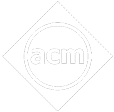- Written By
Shalini Kaveripakam
- Last Modified 24-01-2023
Molecular Mass: Calculation, Relative Molecular & Molar Mass
Molecular Mass: Atoms and molecules are so tiny that it is difficult to calculate their mass. To overcome this difficulty, the chemists determine the masses of these particles by comparing them with a mass of carbon atoms. The isotope of the carbon atom is chosen as a standard atom because it is solid and can be handled easily.
Avogadro, in 1811 suggested that the atomic and molecular masses can be expressed on an atomic mass scale based on the comparison of atomic/ molecular masses with the mass of a reference atom.
What is Molecular Mass?
We have studied that the mass of the atoms of an element is known as its atomic mass. The molecular mass is the relative mass of a molecule compared with the group of a carbon-12 atom taken as 12 units. Thus, the molecular mass of a substance indicates the number of times one molecule of the substance is heavier than \(\frac{1}{{12}}\) (one-twelfth) of a carbon-12 atom.
Learn Average Molecular Mass
For example, the molecular mass of hydrogen is \({\rm{2 u}}\), which means that a molecule of hydrogen is two times heavier than \(\frac{1}{{12}}\) a carbon-\(12\) atom. It is expressed in atomic mass units \(\left( {\rm{u}} \right).\) The other names of the atomic mass unit are Dalton, Aston, and Avogram.
Learn 11th CBSE Exam Concepts
Calculation of Molecular Mass
The molecular mass is calculated by adding the atomic masses of all the atoms present in one molecule of the compound. It is illustrated below.
a. Calculate Molecular Mass of Water
The molecular formula of water is \({{\rm{H}}_2}{\rm{O}}.\)
Hence, the molecular mass of water \({\rm{ = 1}}\, \times {\mkern 1mu} \,{\rm{atomic}}\,{\rm{mass}}\,{\rm{of}}\,{\rm{oxygen}}\,{\rm{ + }}\,{\rm{2}}\, \times \,{\rm{atomic}}\,{\rm{mass}}\,{\rm{of}}\,{\rm{hydrogen}}\)
\( = {\rm{\;}}\left( {1 \times 16} \right){\rm{\;}} + \left( {2 \times 1} \right) = {\rm{\;}}18{\rm{\;u}}.\)
b. Calculate Molecular Mass of Nitric Acid :\(\left( {{\rm{HN}}{{\rm{O}}_3}} \right)\)
The molecular formula of nitric acid is \({\rm{HN}}{{\rm{O}}_3}.\)
Hence, the molecular mass of nitric acid \(= (1 \times {\rm{Atomic}}\,{\rm{mass}}\,{\rm{of}}\,{\rm{hydrogen}}) + (1 \times {\rm{Atomic}}\,{\rm{mass}}\,{\rm{of}}\,{\rm{nitrogen}}) + (3 \times {\rm{Atomic}}\,{\rm{mass}}\,{\rm{of}}\,{\rm{oxygen}})\)
\(= (1 \times 1) + (1 \times 14) + (3 \times 16) = 1 + 14 + 48 = 63\,{\rm{u}}.\)
Practice 11th CBSE Exam Questions
c. Calculate Molecular Mass of Sulphuric Acid \(\left( {{{\rm{H}}_2}{\rm{S}}{{\rm{O}}_4}} \right)\)
The molecular formula of sulphuric acid is \({{\rm{H}}_2}{\rm{S}}{{\rm{O}}_4}.\) One molecule of sulphuric acid \(\left( {{{\rm{H}}_2}{\rm{S}}{{\rm{O}}_4}} \right)\) contains two atoms of hydrogen, four atoms of oxygen, and one atom of sulphur.
Therefore, the molecular mass of \({{\rm{H}}_2}{\rm{S}}{{\rm{O}}_4}\) will be equal to the sum of the groups of \(2\) hydrogen atoms, four oxygen atoms and one sulphur atom. The atomic mass of hydrogen is \(1\,{\rm{u}}\), sulphur is \(32\,{\rm{u}},\), and that of oxygen is \(16\,{\rm{u}}.\) The sulphuric acid molecular mass can calculate as follows:
The molecular mass of sulphuric acid \( = \) atomic mass of \({2^\prime }{{\rm{H}}^\prime }\) atoms \(+\) atomic mass of \({1^\prime }{{\rm{S}}^\prime }\) atoms \(+\) atomic mass of \({4^\prime }{{\rm{O}}^\prime }\) atoms
\( = 2 \times 1 + 32 + 4 \times 16\)
\({\rm{ = 2 + 32 + 64}}\)
\( = 98\,{\rm{u}}\)
Thus, the sulphuric acid molecular mass is \( = 98\,{\rm{u}}.\)
d. Calculate Molecular Mass of Glucose \(\left( {{{\rm{C}}_{\rm{6}}}{{\rm{H}}_{{\rm{12}}}}{{\rm{O}}_{\rm{6}}}} \right)\)
The molecular mass of glucose
\({\rm{ = }}\,({\rm{6}} \times {\rm{atomic}}\,{\rm{mass}}\,{\rm{of}}\,{\rm{C}}){\rm{ + }}({\rm{12}} \times {\rm{atomic}}\,{\rm{mass}}\,{\rm{of}}\,{\rm{H}}){\rm{ + }}({\rm{6}} \times {\rm{atomic}}\,{\rm{mass}}\,{\rm{of}}\,{\rm{O}})\)
\({\rm{ = }}\,{\rm{6}} \times {\rm{12}}\,{\rm{u + 12}} \times {\rm{1}}\,{\rm{u + 6}} \times {\rm{16}}\,{\rm{u}}\)
\({\rm{ = }}\,{\rm{72}}\,{\rm{u + 12}}\,{\rm{u + 96}}\,{\rm{u = 180}}\,{\rm{u}}.\)
The molecular mass of glucose is \({\rm{180}}\,{\rm{u}}.\)
e. Calculate Molecular Mass of Oxygen \(\left( {{{\rm{O}}_{\rm{2}}}} \right)\)
The molecular mass of oxygen molecule \(= 2\) Atomic mass of \({\rm{O}}\)
We know that the atomic mass of oxygen is \({\rm{16}}\,{\rm{u}}\)
Thus, the molecular mass of oxygen molecule \( = 2 \times 16 = 32\,{\rm{u}}\).
Attempt 11th CBSE Exam Mock Tests
f. Calculate Molecular Mass of Urea \(\left( {{\rm{C}}{{\rm{H}}_{\rm{4}}}{{\rm{N}}_{\rm{2}}}{\rm{O}}} \right)\)
The atomic mass of Carbon is \({\rm{12}}\,{\rm{u}},\) Hydrogen is \({\rm{1}}\,{\rm{u}}\), Nitrogen is \({\rm{14}}\,{\rm{u}}\), and Oxygen is \({\rm{16}}\,{\rm{u}}\)
The molecular mass of urea \(\left( {{\rm{C}}{{\rm{H}}_{\rm{4}}}{{\rm{N}}_{\rm{2}}}{\rm{O}}} \right)\)
\({\rm{ = }}({\rm{1}} \times {\rm{atomic}}{\mkern 1mu} {\rm{mass}}{\mkern 1mu} {\rm{of}}{\mkern 1mu} {\rm{C}}){\rm{ + }}({\rm{4}} \times {\rm{atomic}}\,{\rm{mass}}\,{\rm{of}}{\mkern 1mu} {\rm{H}}){\rm{ + }}({\rm{2}} \times {\rm{atomic}}\,{\rm{mass}}\,{\mkern 1mu} {\rm{of}}{\mkern 1mu} {\rm{N}}){\rm{ + }}({\rm{1}} \times {\rm{atomic}}\,{\rm{mass}}\,{\mkern 1mu} {\rm{of}}{\mkern 1mu} {\rm{O}})\)
The molecular mass of urea \(\left( {{\rm{C}}{{\rm{H}}_{\rm{4}}}{{\rm{N}}_{\rm{2}}}{\rm{O}}} \right){\rm{ = 12 + (4 \times 1) + (2 \times 14) + 16}}\)
\({\rm{ = 12 + 4 + 28 + 16}}\)
\({\rm{ = }}{\mkern 1mu} \,{\rm{60}}\,{\mkern 1mu} {\rm{u}}.\)
g. Calculate Molecular Mass of Hydrochloric Acid (HCl)
We know that the atomic mass of \({\rm{Cl}}\) is \({\rm{35}}.{\rm{5}}\,{\rm{u}}\), the atomic mass of \({\rm{H}}\) is \({\rm{1u}}\).
The molecular mass of hydrochloric acid (HCl) = atomic mass of \({\rm{Cl+}}\) atomic mass of H atoms
\({\rm{ = 35}}.{\rm{5 + 1 = 36}}.{\rm{5}}\,{\rm{u}}.\)
- The formula represents the name of the substance.
- The formula represents one molecule of the substance.
- It represents one mole of molecules of the substance. That is, the formula also represents \(6.022 \times {10^{23}}\) molecules of the substance.
- The formula gives the names of all the elements present in the molecule.
- The formula gives the number of atoms of each element present in one molecule.
- The formula represents a definite mass of the substance (equal to molecular mass expressed in grams).
Practice Exam Questions
Relative Molecular Mass \(\left( {{{\rm{M}}_{\rm{r}}}} \right)\)
Like the atomic mass, the molecular mass of a compound is also minute, which cannot be measured directly. Therefore, the molecular mass of a compound is expressed as relative molecular mass \(\left( {{{\rm{M}}_{\rm{r}}}} \right).\) The relative molecular mass of a compound is the average mass of one molecule compared to \(\frac{1}{{12}}\) of one carbon-\(12\) atom.
Relative molecular mass \(\left( {{{\rm{M}}_{\rm{r}}}} \right)\)
\(\frac{{{\rm{Average}}\,{\rm{mass}}\,{\rm{of}}\,{\rm{one}}\,{\rm{molecule}}\,{\rm{of}}\,{\rm{the}}\,{\rm{compound}}}}{{\frac{1}{{12}} \times \left( {{\rm{Mass}}\,{\rm{of}}\,{\rm{an}}\,{\rm{atom}}\,{\rm{of}}{\,^{12}}{\rm{C}}} \right)}}\)
The relative molecular mass \(\left( {{{\rm{M}}_{\rm{r}}}} \right)\) is a pure number, and it does not have a unit.
For example, to determine the relative molecular mass of sodium sulphate \(\left( {{\rm{N}}{{\rm{a}}_{\rm{2}}}{\rm{S}}{{\rm{O}}_{\rm{4}}}} \right)\), it has two sodium, one sulphur, and four oxygen.
The molecular mass of sodium sulphate \(\left( {{\rm{N}}{{\rm{a}}_2}{\rm{S}}{{\rm{O}}_4}} \right){\rm{ = 2}} \times {\rm{23 + 32 + 4}} \times {\rm{16 = 142}}\,{\rm{u}}\)
Relative molecular mass \(\left( {{{\rm{M}}_{\rm{r}}}} \right){\rm{ = }}\frac{{{\rm{Average}}\,{\rm{mass}}\,{\rm{of}}\,{\rm{one}}\,{\rm{molecule}}\,{\rm{of}}\,{\rm{the}}\,{\rm{compound}}}}{{\frac{{\rm{1}}}{{{\rm{12}}}} \times \left( {{\rm{Mass}}\,{\rm{of}}\,{\rm{an}}\,{\rm{atom}}\,{\rm{of}}{\,^{{\rm{12}}}}{\rm{C}}} \right)}}\)
\({\rm{ = }}\frac{{{\rm{142}}\,{\rm{u}}}}{{{\rm{1}}\,{\rm{u}}}}{\rm{ = 142}}\)
Gram Molecular Mass or Molar Mass
When the molecular mass is expressed in grams, it is called gram molecular mass or gram molecule or mole molecule. We can also define it as the amount of a substance whose mass in grams is numerically equal to its molecular mass. Gram molecular mass of a substance is also called its one-gram molecule or molar mass.
For example, Gram molecular mass (Molar mass) of \({\rm{N}}{{\rm{H}}_{\rm{3}}}{\rm{ = 17\;g}}\).
Molecular mass of oxygen \({\rm{ = }}\,{\rm{32}}\,{\rm{a}}.{\rm{m}}.{\rm{u}}.\)
One-gram molecule of oxygen \({\rm{ = 32\;g}}\) of oxygen.
Gram molecular mass (Molar mass) of \({{\rm{C}}_{\rm{2}}}{{\rm{H}}_{\rm{6}}}{\rm{ = 30\;g}}{\rm{.}}\)
The molecular mass (Molar mass) of \({{\rm{C}}_{\rm{2}}}{{\rm{H}}_{\rm{6}}}{\rm{ = }}\,{\rm{30}}\,{\rm{a}}.{\rm{m}}.{\rm{u}}{\rm{.}}\)
One-gram molecule of \({{\rm{C}}_{\rm{2}}}{{\rm{H}}_{\rm{6}}}{\rm{ = 30\;g}}\) of ethane.
Attempt Mock Tests
Summary
From this article, we learnt the importance of molecular mass and how to measure the molecular mass of an element, calculating the molecular mass, relative molecular mass and molar mass.
FAQs on Molecular Mass
Let’s look at some of the commonly asked questions about molecular mass:
Q.1. How to calculate molecular mass?
Ans: A compound’s molecular mass is calculated by adding the atomic masses of all the atoms present in one molecule of the compound. The atomic mass of \({\rm{C}}\) is \({\rm{12}}\,{\rm{u,}}\) the atomic mass of \({\rm{H}}\) is \(1\,{\rm{u}},\) nitrogen atomic mass is \({\rm{14}}\,{\rm{u}},\) and the atomic mass of oxygen is \({\rm{16}}\,{\rm{u}}{\rm{.}}\)
The molecular mass of urea \(\left( {{\rm{C}}{{\rm{H}}_4}\;{{\rm{N}}_2}{\rm{O}}} \right)\)
\({\rm{ = }}({\rm{1}} \times {\rm{atomic}}\,{\rm{mass}}\,{\rm{of}}\,{\rm{C}}){\rm{ + }}({\rm{4}} \times {\rm{atomic}}\,{\rm{mass}}\,{\rm{of}}\,{\rm{H}}){\rm{ + }}({\rm{2}} \times {\rm{atomic}}\,{\rm{mass}}\,{\rm{of}}\,{\rm{N}}){\rm{ + }}({\rm{1}} \times {\rm{atomic}}\,{\rm{mass}}\,{\rm{of}}\,{\rm{O}})\)
\( = 12 + 4 \times 1 + 2 \times 14 + 16\)
\({\rm{ = 12 + 4 + 28 + 16}}\)
\(= 60\,{\rm{u}}.\)
Q.2. How to find molecular mass?
Ans: The molecular mass is equal to the sum of the atomic masses of all atoms present in one substance molecule—for example, the molecular mass of nitric acid \(\left( {{\rm{HN}}{{\rm{O}}_3}} \right) = \)
\((1 \times {\rm{Atomic}}\,{\rm{mass}}\,{\rm{of}}\,{\rm{hydrogen}}) + (1 \times {\rm{Atomic}}\,{\rm{mass}}\,{\rm{of}}\,{\rm{nitrogen}}) + (3 \times {\rm{Atomic}}\,{\rm{mass}}\,{\rm{of}}\,{\rm{oxygen}})\)
\( = (1 \times 1) + (1 \times 14) + (3 \times 16)\)
\({\rm{ = 1 + 14 + 48 = 63}}\,{\rm{u}}\)
Q.3. What is molecular mass? Give an example?
Ans: The molecular mass of a substance indicates the number of times one molecule of the substance is heavier than \(\frac{{\rm{1}}}{{{\rm{12}}}}\) (one-twelfth) of a carbon-\({\rm{12}}\) atom.
The molecular formula of sulphuric acid is \({{\rm{H}}_{\rm{2}}}{\rm{S}}{{\rm{O}}_{\rm{4}}}\) : One molecule of sulphuric acid \({{\rm{H}}_{\rm{2}}}{\rm{S}}{{\rm{O}}_{\rm{4}}}\) contains two atoms of hydrogen, four atoms of oxygen, and one atom of sulphur. Therefore, the molecular mass of \({{\rm{H}}_{\rm{2}}}{\rm{S}}{{\rm{O}}_{\rm{4}}}\) will be equal to the sum of the groups of \(2\) hydrogen atoms, four oxygen atoms and one sulphur atom.
The atomic mass of hydrogen is \({\rm{1}}\,{\rm{u}},\) sulphur is \({\rm{32}}\,{\rm{u}},\) and that of oxygen is \({\rm{16}}\,{\rm{u}}{\rm{.}}\)
The sulphuric acid molecular mass can be calculated as follows:
Molecular mass of \({{\rm{H}}_{\rm{2}}}{\rm{S}}{{\rm{O}}_{\rm{4}}}{\rm{ = }}\,{\rm{atomic}}\,{\rm{mass}}{\mkern 1mu} \,{\rm{of}}\,{\rm{2}}\,{\rm{‘H’}}\,{\rm{atom}}{\mkern 1mu} \,{\rm{ + }}{\mkern 1mu} \,{\rm{atomic}}{\mkern 1mu} \,{\rm{mass}}{\mkern 1mu} \,{\rm{of}}\,{\rm{S}}\,{\rm{atom}}\,{\rm{ + }}{\mkern 1mu} \,{\rm{atomic}}\,{\rm{mass}}\,{\mkern 1mu} {\rm{of}}\,{\rm{4}}{\mkern 1mu} {\rm{‘O’}}\,{\rm{atoms}}\)
\({\rm{ = 2 \times 1 + 32 + 4 \times 16}}\)
\({\rm{ = 2 + 32 + 64}}\)
\({\rm{ = }}\,{\rm{98}}\,{\rm{u}}\)
Thus, the sulphuric acid molecular mass is \({\rm{ = }}\,{\rm{98}}\,{\rm{u}}{\rm{.}}\)
Q.4. What is molecular mass used for?
Ans: Molecular mass is a measure of the sum of the atomic masses of the atoms in a molecule. In chemistry, it is used to determine stoichiometry in chemical reactions and equations.
Q.5. What does a molecular mass mean or indicate?
Ans: The molecular mass is represented as \({\rm{u}}.\) Due to the different isotopes of an element, different molecules of the same compound can have different molecular masses.
We hope this detailed article on Molecular Mass is helpful to you. If you have any queries on this page, ping us through the comment box below and we will get back to you as soon as possible.









































